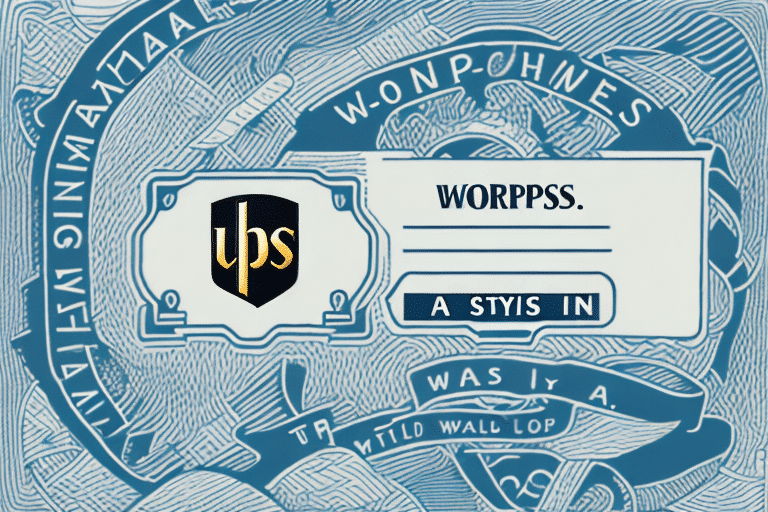Why Do UPS WorldShip Labels Not Have Tracking Numbers at the Bottom?
UPS WorldShip is a widely used shipping solution trusted by thousands of businesses globally. Despite its efficiency in managing shipping processes, many users are puzzled by the absence of tracking numbers prominently displayed at the bottom of the labels. This article delves into the reasons behind this design choice and explores the significance of tracking numbers on shipping labels.
Understanding the UPS WorldShip Label Format
The UPS WorldShip label adheres to the standards set by the Universal Postal Union (UPU) and the International Air Transport Association (IATA). These labels include critical information such as the recipient's address, origin address, and package weight, ensuring compliance with international shipping regulations.
Designed for automation, the label format facilitates easy scanning by sorting machines, which enhances the speed and accuracy of package sorting. Each label contains a unique tracking number embedded within a barcode, enabling real-time tracking of the package's journey from sender to recipient.
It's essential to verify that the label meets the destination country's customs requirements to prevent delays or returns. Non-compliance with customs regulations can lead to significant disruptions in the shipping process.
The Significance of Tracking Numbers on Shipping Labels
Tracking numbers are pivotal in the logistics and shipping industry. They provide a unique identifier for each package, allowing both shippers and recipients to monitor the package's status and location throughout its transit. According to a 2021 Verizon Logistics Trends Report, real-time tracking significantly enhances customer satisfaction by offering transparency and reducing uncertainty.
Beyond customer assurance, tracking numbers aid shipping companies in optimizing their operations. They help in identifying bottlenecks, managing inventory, and ensuring timely deliveries. In cases of lost or delayed packages, tracking numbers are indispensable for locating the package and addressing the issue promptly.
Additionally, tracking numbers contribute to security by verifying the package's legitimacy and ensuring it reaches the intended recipient, thereby mitigating the risks of theft or loss.
Alternative Tracking Methods and Technologies
While tracking numbers are fundamental, there are alternative methods to monitor shipments:
- Reference Numbers: These are internal identifiers used by businesses to track orders without exposing the actual tracking number.
- UPS InfoNotice® Numbers: Issued when a delivery attempt fails, providing information on how to retrieve or reschedule the package.
- Smart Labels: Incorporate technologies like QR codes or RFID chips, offering more detailed tracking capabilities.
Advancements in technology have introduced GPS-enabled labels, allowing real-time location tracking. These innovations provide enhanced visibility and control over the shipping process, catering to the growing demand for transparency in logistics.
Technology in Package Tracking
The integration of modern technologies has revolutionized package tracking and labeling:
- Barcode Scanners: Automate the data capture process, reducing errors and accelerating sorting.
- Tracking Software: Provides a centralized platform for monitoring shipments, analyzing data, and optimizing routes.
- Automated Sorting Systems: Enhance the efficiency of handling large volumes of packages, ensuring swift and accurate deliveries.
The adoption of artificial intelligence and machine learning in tracking systems allows for predictive analytics, forecasting delivery times, and identifying potential delays before they occur. According to a study by McKinsey & Company, such technologies can improve delivery accuracy by up to 30% and reduce operational costs significantly.
Common Issues with UPS WorldShip Labels and Solutions
Despite its robustness, users may encounter challenges with UPS WorldShip labels:
- Label Generation Errors: These can be resolved by updating the WorldShip software, ensuring printer compatibility, and verifying software-printer connectivity.
- Incorrect Label Printing: Often caused by incorrect label size or format settings. Users should double-check label configurations before printing.
- Improper Label Placement: Ensuring labels are affixed correctly and placed in the designated area on the package is crucial to prevent delays.
Addressing these issues promptly ensures the smooth operation of the shipping process and maintains customer satisfaction.
Best Practices and Future Trends in Shipping Labels
Adhering to best practices in label creation and application can enhance delivery efficiency:
- Use Clear Fonts: Ensure all text is legible to facilitate accurate scanning and processing.
- Proper Alignment: Align labels correctly to avoid misreads by barcode scanners.
- Secure Affixation: Labels should be firmly attached to prevent detachment during transit.
Looking ahead, the shipping industry is poised to embrace innovative trends such as:
- Smart Labels: Equipped with sensors to monitor environmental conditions like temperature and humidity.
- Blockchain Integration: Enhances transparency and security in tracking shipments.
- Eco-Friendly Labels: Focused on sustainability by using recyclable materials and environmentally safe inks.
These advancements aim to improve the accuracy, security, and sustainability of shipping and labeling practices.
Conclusion
The absence of prominently displayed tracking numbers at the bottom of UPS WorldShip labels is a deliberate design choice aligned with international labeling standards. Tracking numbers remain an integral component of the shipping process, providing transparency, security, and efficiency. By understanding the label format, leveraging alternative tracking methods, and adhering to best practices, businesses can optimize their shipping operations and enhance customer satisfaction.
As technology continues to evolve, the future of shipping labels promises even greater advancements, ensuring that package tracking becomes more accurate, secure, and efficient.






















